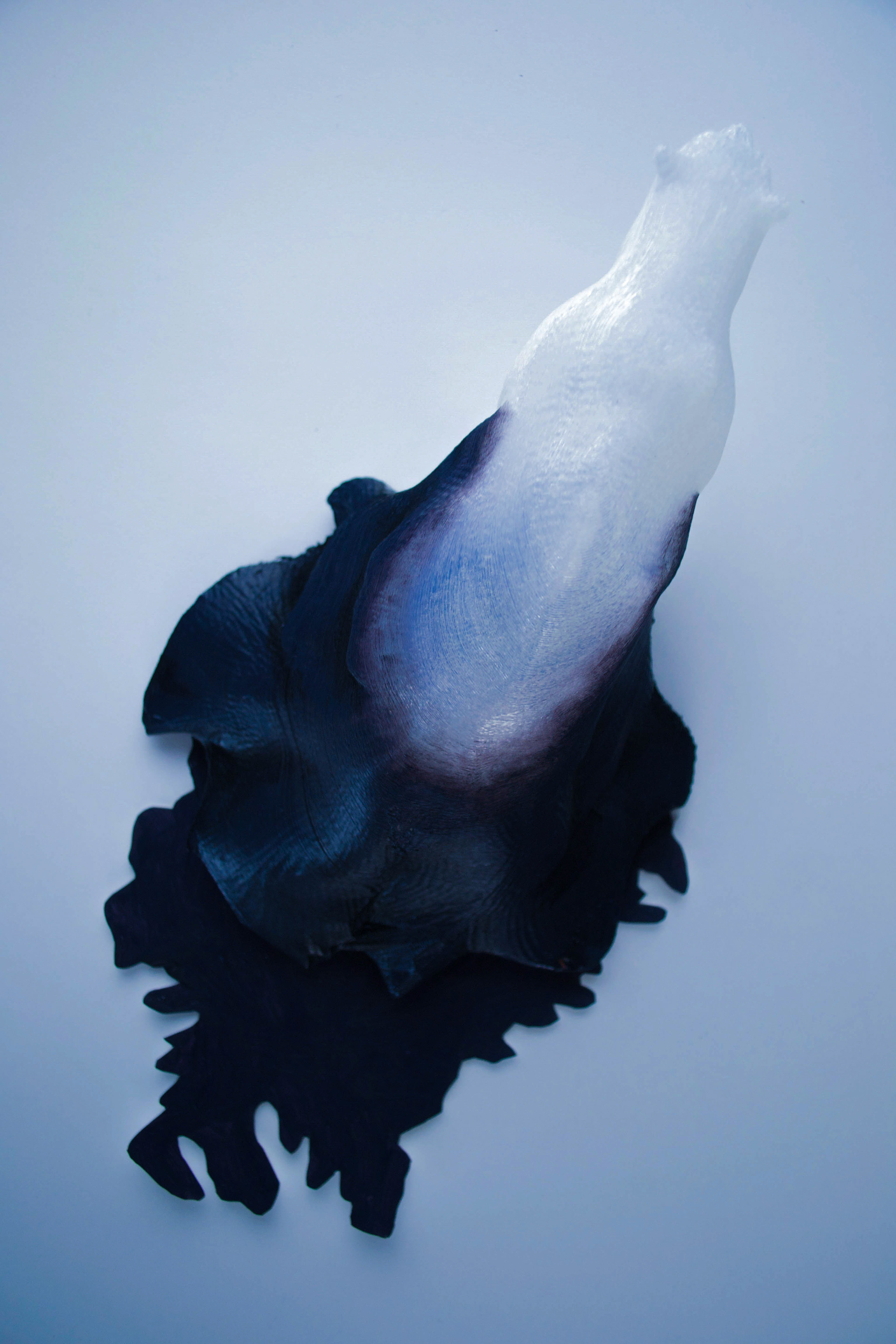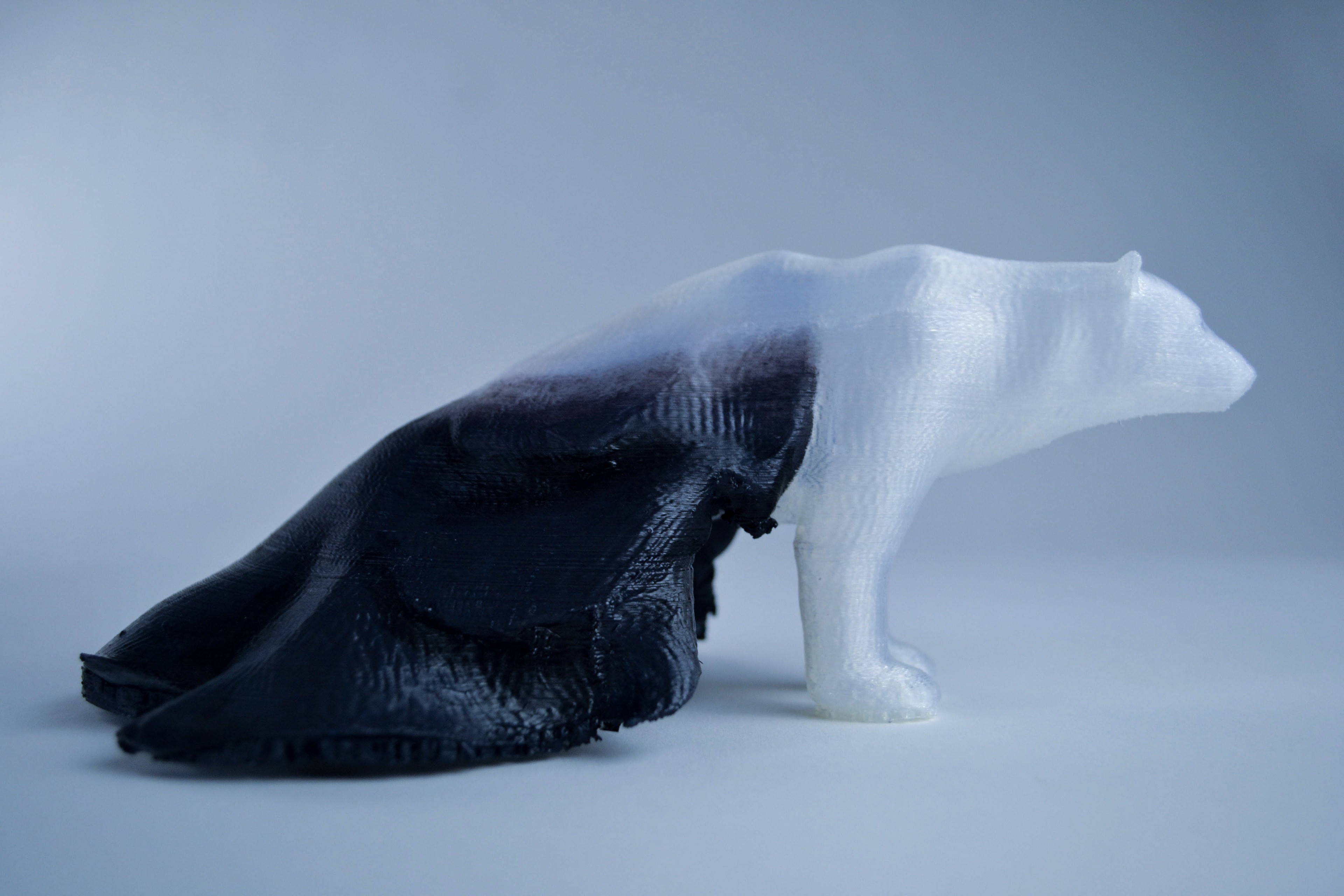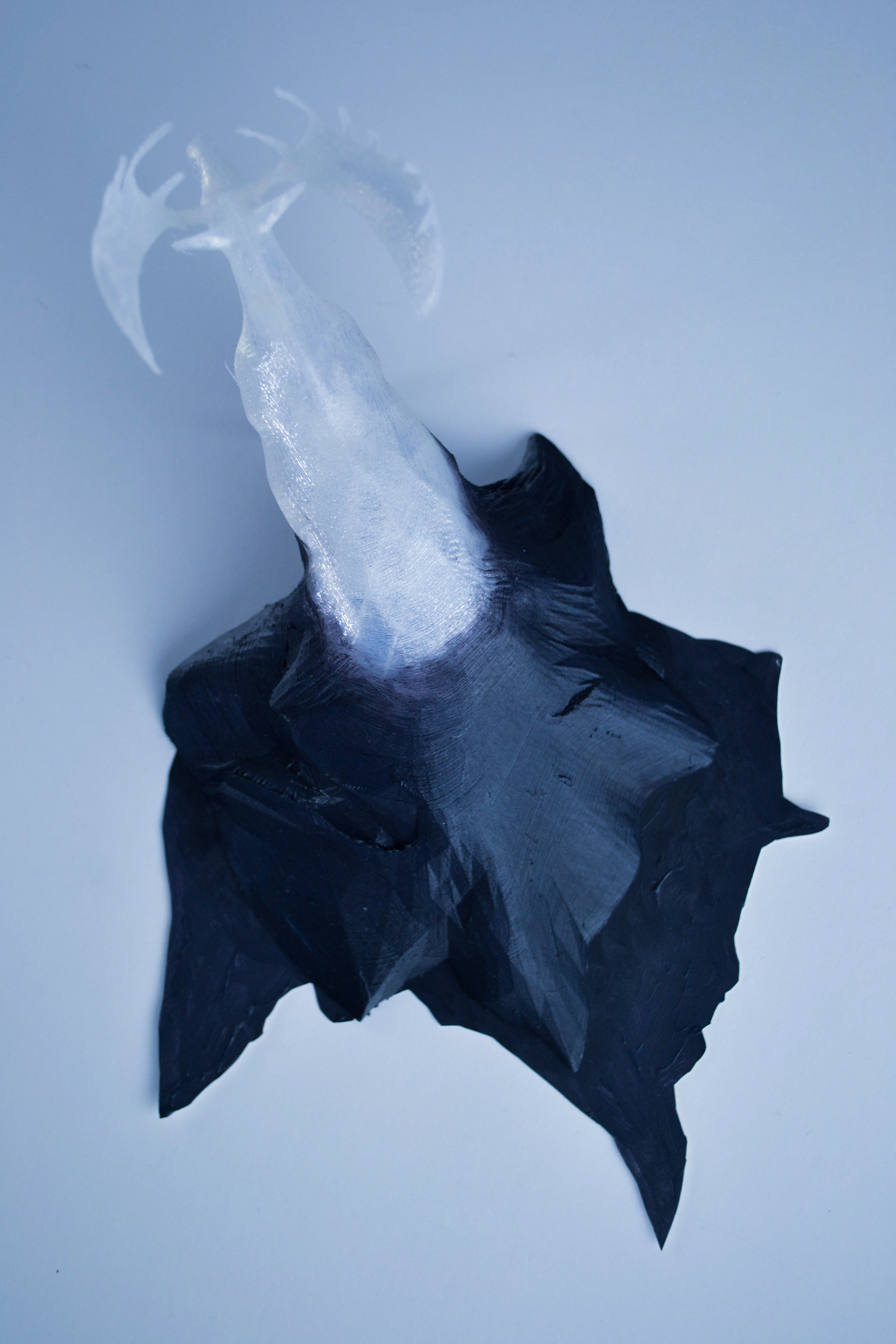Current studies show an extinction crisis is happening among species around the world. It has been found that humanity has wiped out 60% of vertebrate populations world wide since 1970. Much of this decline is attributed to humans destroying animals habitats as well as human effects on the climate. Many of these impacts are caused by human exploration to extract natural resources and use those in everyday life.
These pieces explore different species around the world and their connection to the natural resources that humans are after. I wanted to explore how the species are threatened to disappear as human exploration for different natural resources occurs. Showing the animals disappearing, morphing into the substances that are more desired by humans than the animals themselves. I wanted to on the location in the pieces, having the natural resources spread into the shape of the state or country where the issue is located at. I wanted to focus on the locations to show that this is happening world wide, not just in one area. That humans are systematically threatening life around the world while using and trying to access natural resources such as fossil fuels, copper, gold, and coal.


Greenland Polar Bear
As temperatures increase, caused by increased greenhouse gases from the burning of fossil fuels and oil consumption, sea ice is drastically decreasing. Declining sea ice theaters the life of the remaining polar bear populations. Polar bears in Greenland, Norways, Canada, Russia, and America are all threatened as summers lengthen and ice disappears. The main way the polar bears hunt is utilizing the sea ice to target their prey. They will often wait by seal air holes in the ice and get their meal when the seal returns. As the ice melts, air holes are no longer needed and access to their food withers away. Polar bear populations are expected to decrease more than 2/3rds by 2050.


Minnesota Moose
Moose populations in Minnesota have dropped from over 4,000 to now numbers less than 1,000. Climate change, mainly increased by human consumption and burning of fossil fuels, i.e. oil, is driving up temperatures and population numbers down. As winters shorten, and have risen 11 degrees, moose are dying at a higher for several reasons. The leading factor being ticks. With the season for ticks now extended because of rising temperatures from climate change, they now have time to completely infest moose. Thousands of ticks can be found on a single moose, and numbers that high are fatal. Rising temps, and extended summers have also allowed pine beetles to run rampant, destroying habitat and leaving moose at high risk of predation.


Australian Dugong
In Australia, a relative of the manatee, the dugong, is already endangered because of coastal development and increases in severe weather, like cyclones, caused by climate change. This species is now threatened again by the proposed Carmichael coal mine. This coal mine would increase boat traffic in the dugongs habitat due to need for shipping and transportation of the coal. Boat strikes, one of the leading causes in death of dugongs, would increase with boat traffic, leading to high fatality rates. The coal also threatens to have leakage of toxin that could decrease water quality. Since only dugongs only have one baby every 2.5 to 7 years, and with only 2800 remaining in the area, if populations drop too low, breeding won't be able to sustain the population.


Alaskan Bald Eagle
Each year, at Chilkat Bald Eagle Preserve in Alaska, over 4,000 eagles migrate to consumer the salmon spawn. Both the salmon and the whole eagle population are threatened by the Palmer Project, a gold and copper mine. The mine, being close to seismic faults, threatens to leak corrosive liquid which could kill off the salmon there. Bald eagles, that both live in the area, and that travel as far as California for the salmon, would be threatened by such a huge loss of food supply. Without a reason to migrate for the salmon run, interaction and mating pairs could decrease, and the populations in those areas could drop drastically.


Alaskan Salmon
In Bristol Bay Alaska all 5 species of salmon (Sockeye, Chinook, Chum, Coho, and Pink) found in North America converge. This water system produces nearly 50% of the worlds wild sockeye salmon. There, miles of pristine salmon supporting streams, at least 94 miles, are currently threatened by the proposed copper, gold, and molybdenum mine, Pebble Mine. Seismic activity is a threat to the mine, as Alaska experiences at least 5 magnitude 6-7 earthquakes a year, which could cause leakage. If the toxic copper concentrate leaked, it could kill the salmon population there. This isn't just a species at threat, but a while ecosystem of animals that rely on salmon migration and a way of life for the 4,000 locals who lice there and make their living off fishing.